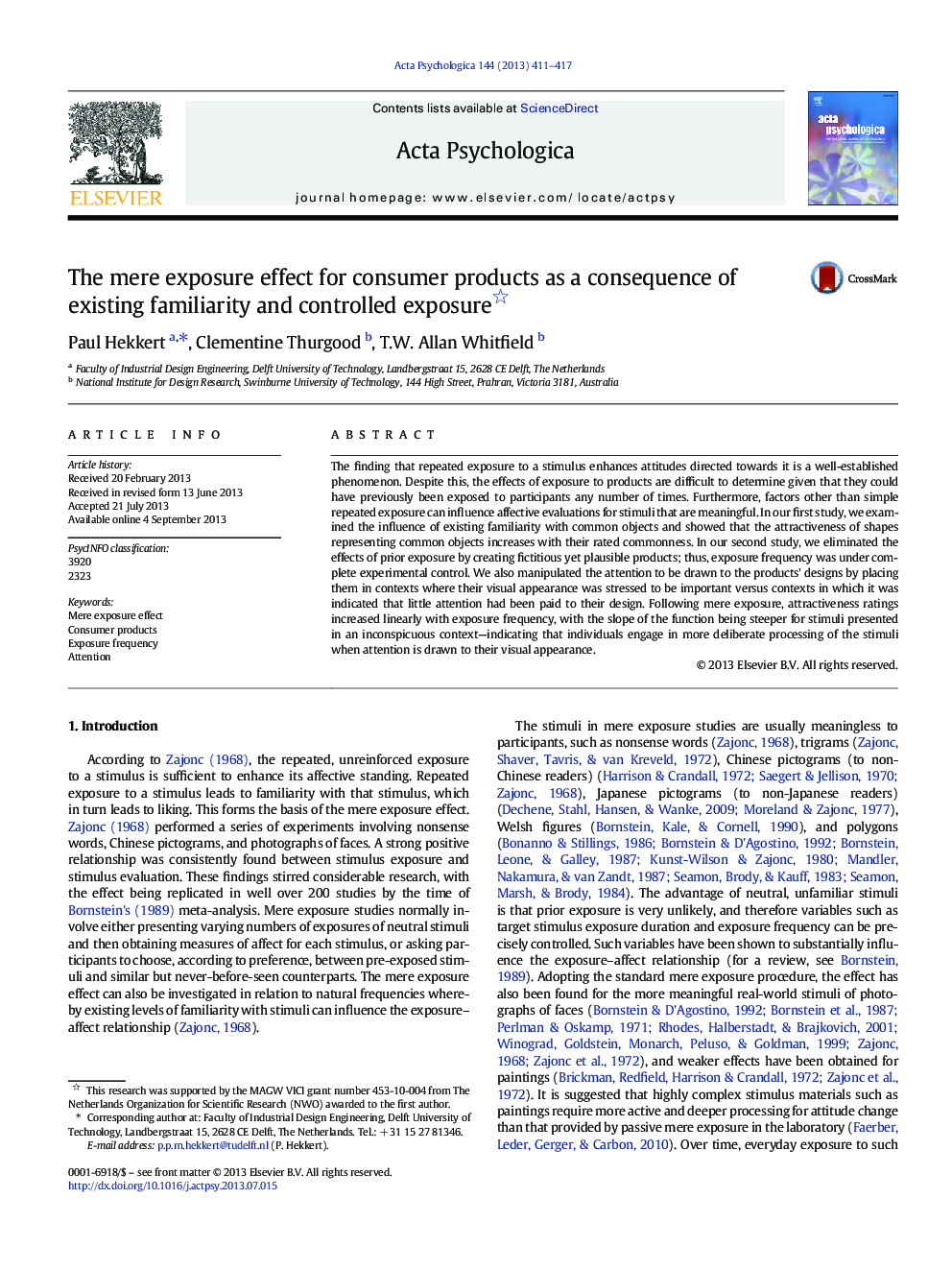| Article ID | Journal | Published Year | Pages | File Type |
|---|---|---|---|---|
| 10453788 | Acta Psychologica | 2013 | 7 Pages |
Abstract
The finding that repeated exposure to a stimulus enhances attitudes directed towards it is a well-established phenomenon. Despite this, the effects of exposure to products are difficult to determine given that they could have previously been exposed to participants any number of times. Furthermore, factors other than simple repeated exposure can influence affective evaluations for stimuli that are meaningful. In our first study, we examined the influence of existing familiarity with common objects and showed that the attractiveness of shapes representing common objects increases with their rated commonness. In our second study, we eliminated the effects of prior exposure by creating fictitious yet plausible products; thus, exposure frequency was under complete experimental control. We also manipulated the attention to be drawn to the products' designs by placing them in contexts where their visual appearance was stressed to be important versus contexts in which it was indicated that little attention had been paid to their design. Following mere exposure, attractiveness ratings increased linearly with exposure frequency, with the slope of the function being steeper for stimuli presented in an inconspicuous context-indicating that individuals engage in more deliberate processing of the stimuli when attention is drawn to their visual appearance.
Related Topics
Life Sciences
Neuroscience
Cognitive Neuroscience
Authors
Paul Hekkert, Clementine Thurgood, T.W. Allan Whitfield,
